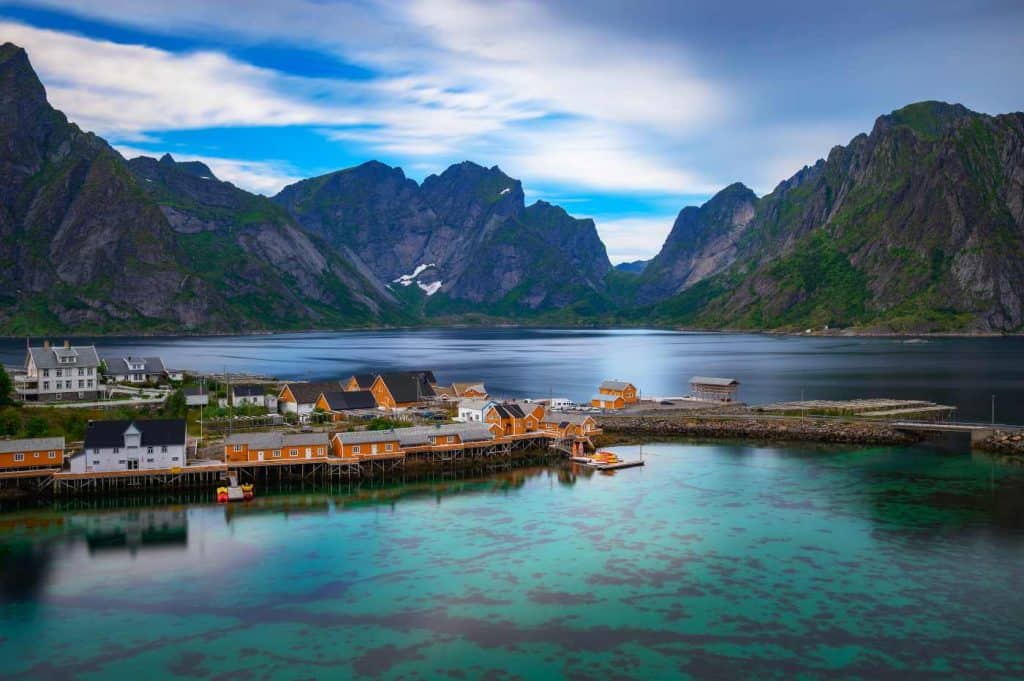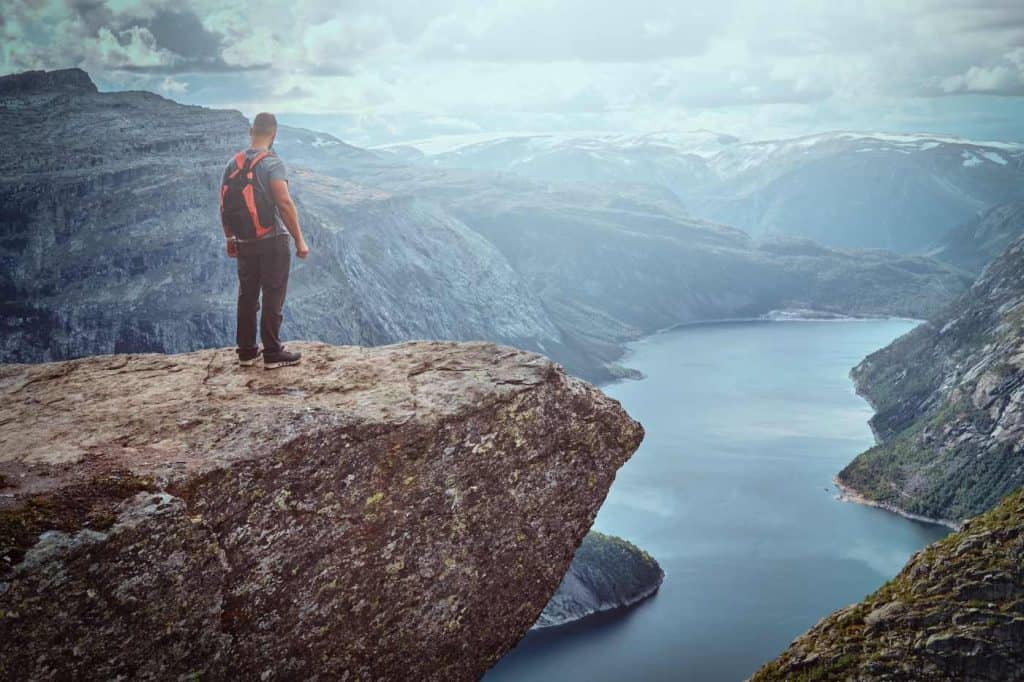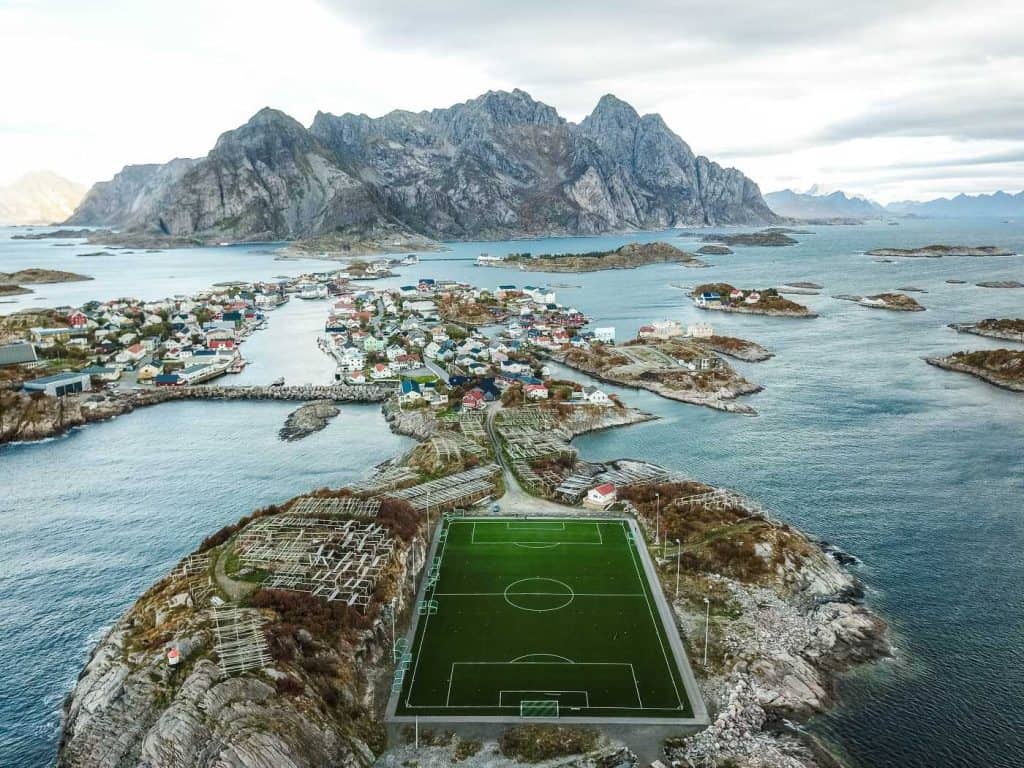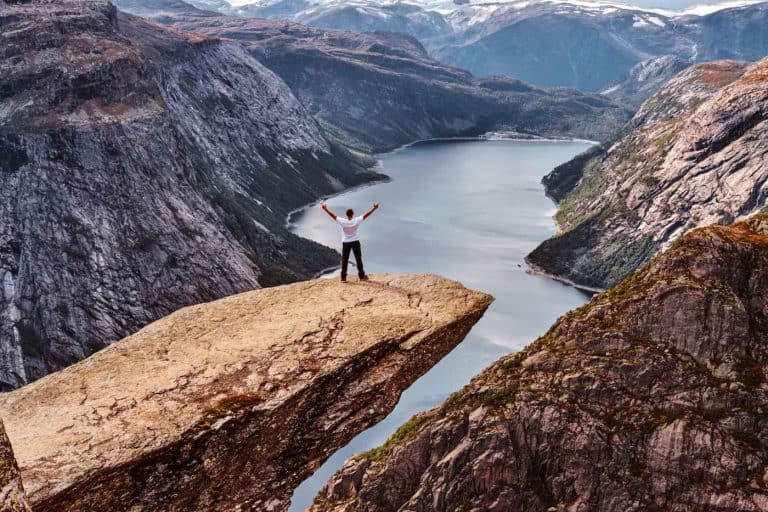The Nordic countries each have their own identity, but also have a lot in common with one another. This extensive list includes Norway, Sweden, Denmark, Finland, and Iceland, as well as the Faroe Islands, Greenland and Åland.
The first thing many people think these countries have in common is the amazing nature. From the snow-capped peaks of Norway to the pristine forests of Sweden. Iceland’s mighty volcanoes, Finland’s many lakes and Denmark’s miles-long white sandy beaches.
For all these countries it is important to preserve their natural heritage, and they have almost become synonymous with outdoor recreation. Both locals and tourists have access to a variety of exciting activities, but environmental protection and sustainability are always at the forefront of their mind.
The Nordic region and sustainability

The Nordic region has the top ranking in the world when it comes to sustainability. At the very top is Norway, as the most sustainable country in the world. Sweden, Finland and Denmark follow close behind. The Nordic countries have dominated the list of the most sustainable countries for several years. That’s thanks to leadership in governance, innovation, human capital and environmental indicators.
The Norwegian Government is investing heavily in renewable energy. Hydropower accounts for about 95% of the country’s energy production. By 2025, all vehicles in circulation will be powered by green energy, but Norway is already one of the countries in the world with the most electric cars per capita. Some of the UN’s sustainability requirements have already been met by Norway, but there is still some way to go to reach everyone.
Sustainability is about recognising that nature and the environment have limits and must be safeguarded and managed in a responsible manner. In this regard, Finland is the first country globally to have created a comprehensive plan for efficient and sustainable use of resources. They see the circular economy as a matter of national importance and prioritise its implementation.
Denmark is a trailblazer when it comes to the green transition. Since 1996, it has cut its CO2 emissions by more than half. In 2019, 47% of the electricity produced in the country was from wind power.
In Denmark, they are working to drive the global transition to a sustainable and resource-efficient society. Their work includes renewable energy, water management, climate adaptation, energy efficiency, waste management and circular economy.
Outdoor activities

As a result of their beautiful and varied nature, the Nordic countries have a lot to offer in terms of outdoor activities. Many activities are seasonal, while some can be done all year round. In almost all the Nordic countries you can experience both the midnight sun and the northern lights.
Norway
- Walks in the woods and fields can be carried out all year round, but in winter most people choose to go skiing rather than walking.
- Norway has many mountain peaks. There are peaks for those with lots of experience and who want a challenge, but also for families with small children and those who have never been to a mountain top before.
- The long coastline of Norway offers plenty of opportunities for water activities, from jagging and boat trips to water skiing and swimming.
Sweden
- In Sweden you can freely walk, camp, cycle or ski all over the country according to Allemansrätten, Sweden’s right to roam. It also allows you to pick wild berries, fish and swim where there are no houses nearby.
- There are also many good skiing opportunities in Sweden, whether you prefer cross-country skiing, downhill skiing or maybe snowboarding.
- Sweden also has many good golf courses, especially in Halland and Skåne.
Denmark
- Denmark is a fairly flat country, making it an ideal place to go on a bike ride. Drop the car, strap on a cart on a bike and see Denmark from the seat of your bike.
- The beaches in Denmark are among the most beautiful in the Nordic countries, but they can be windy.
- The perfect wind environment means that there are good sailing conditions along the coast of Denmark. Whether you want to sail around Denmark or just take a day trip on the sea.
Finland
- The first thing many people think of when they hear Finland is sauna. An activity you can enjoy all year round.
- Finland is known as the land of a thousand lakes, with opportunities for everything from fishing to canoe trips.
- The Archipelago Sea, in the Baltic Sea between the mainland and Sweden, is a popular tourist destination. Aland Islands, including the largest islands in the region, constitute an autonomous region of Finland.
Island
- Iceland is a volcano island which makes it stand out from the other Nordic countries with its unique nature. A fun way to explore the island is on horseback.
- The Blue Lagoon is Iceland’s most famous hot spring, but there are several small and large natural hot springs all over the island.
- A guided tour into glacier caves is an experience of a lifetime. If the caves feel a little claustrophobic, you can go hiking up the glacier as well.
Hobbies in the Nordies
Some of the most popular hobbies in Scandinavia include fishing and hunting. Given the vast amount of nature, it’s no surprise that the locals spending time in it and engage in activities such as hikes or go hunting or fishing.
However, Scandinavians also have other hobbies that take place indoors. In Denmark and Sweden its common to meet with friends to have a hygge in Denmark or a fika in Sweden, involving a cup of tea or coffee and a snack while friends enjoy a conversation.
Boardgame nights are also common in all the Nordic countries. When it’s cold and dark outside, there’s nothing better than playing a game of Monopoly or Scrabble while drinking a cup of hot chocolate. Talking about games – casino games are another popular hobby in the Nordic countries. Such land-based options are illegal in Norway, but are available online. According to this guide there are specific criteria that they need to look for though. In Sweden, Denmark, Finland and Iceland, on the other hand, such options are allowed, so many Norwegians visit these countries or play on cruise ships.
Nordic culture

There are many cultural similarities amongst the Nordic countries. Especially in design and architecture, known for a common visual expression, simplicity, clean lines and the use of natural materials. It’s not that there are a lot of similarities. Denmark, Norway, Sweden and Finland have interwoven their histories over the centuries.
The strongest cultural link between the Nordic countries is probably the Nordic Council Literature Prize. They were first awarded in 1962 with the aim of increasing interest in the literature and language of the various countries. The prize is awarded to a work of fiction of high literary and artistic quality.
Since then, they have expanded with more prize categories. The Nordic Council is now also awarding prizes in children’s and young people’s literature, film, music and the environment.
Norway, Sweden and Finland also share Sami culture, something that Nordic has not forgotten. When Sami works are nominated, Sami representatives participate temporarily. The same applies to nominations from Åland, Greenland or the Faroe Islands.
Last Word
The Nordic region is an area with more similarities than differences. Nevertheless, the Nordic countries are so different that Norwegians visiting the neighbouring countries will be able to experience a lot of new and exciting things.
All the Nordic countries are perfect for fantastic nature experiences and outdoor activities. With common sustainability goals and respect for the environment, future generations will also benefit from everything the Nordic countries have to offer.
